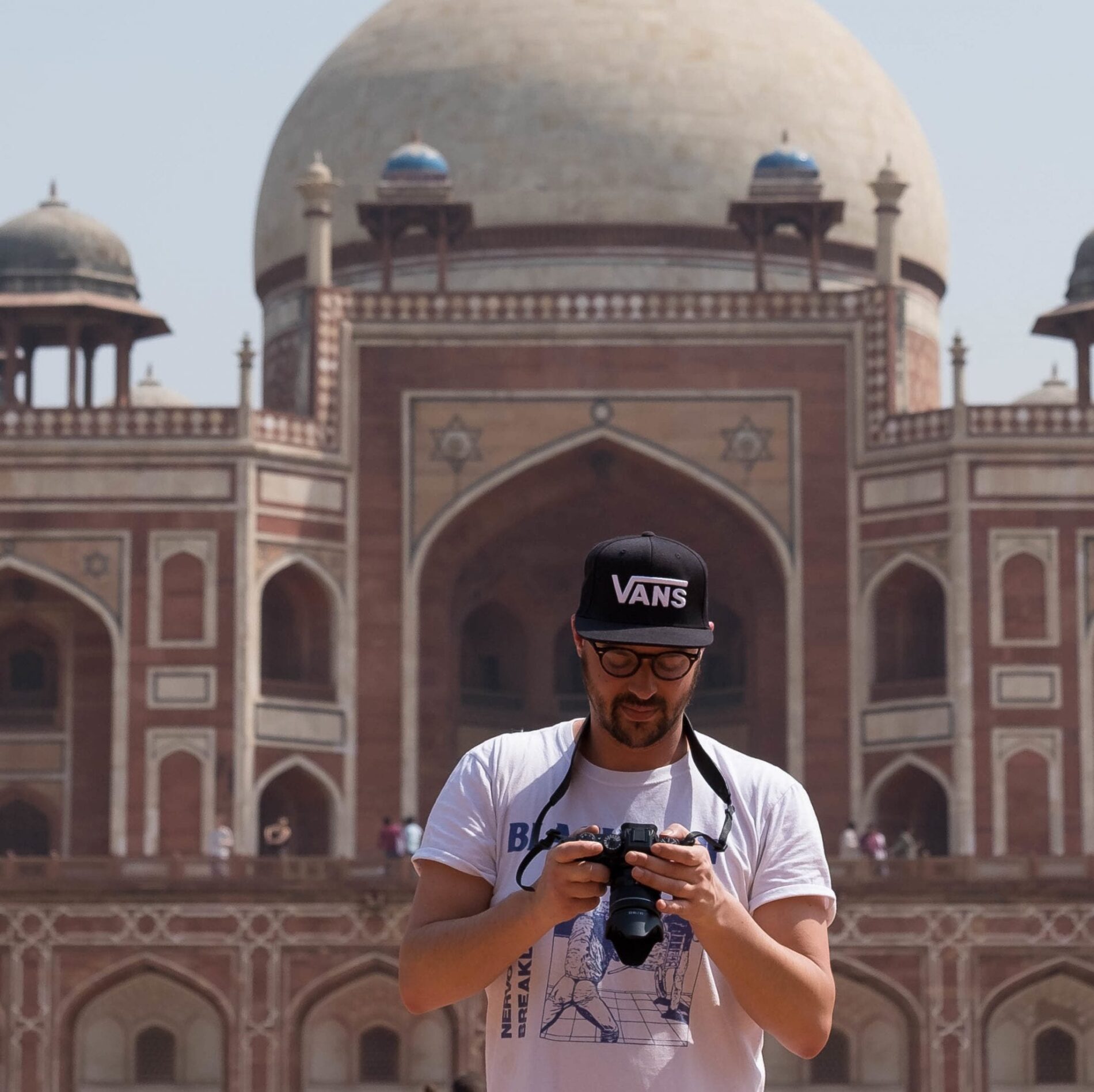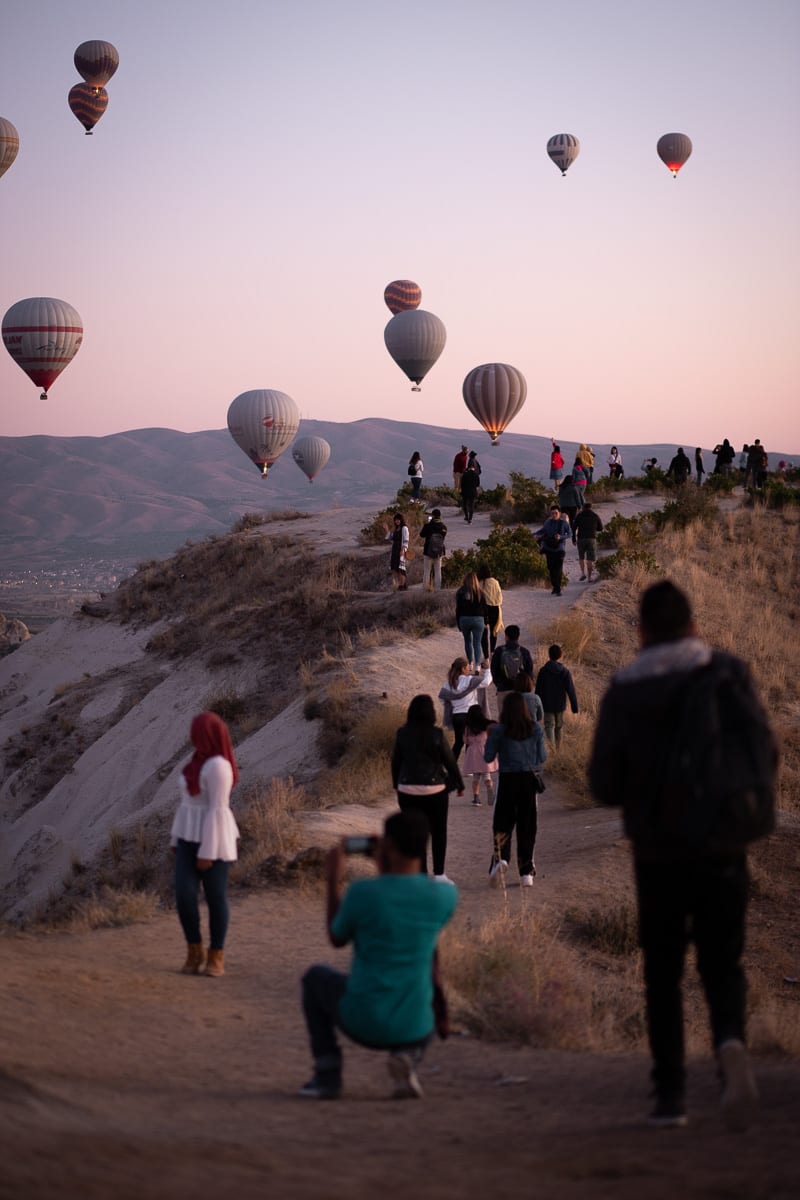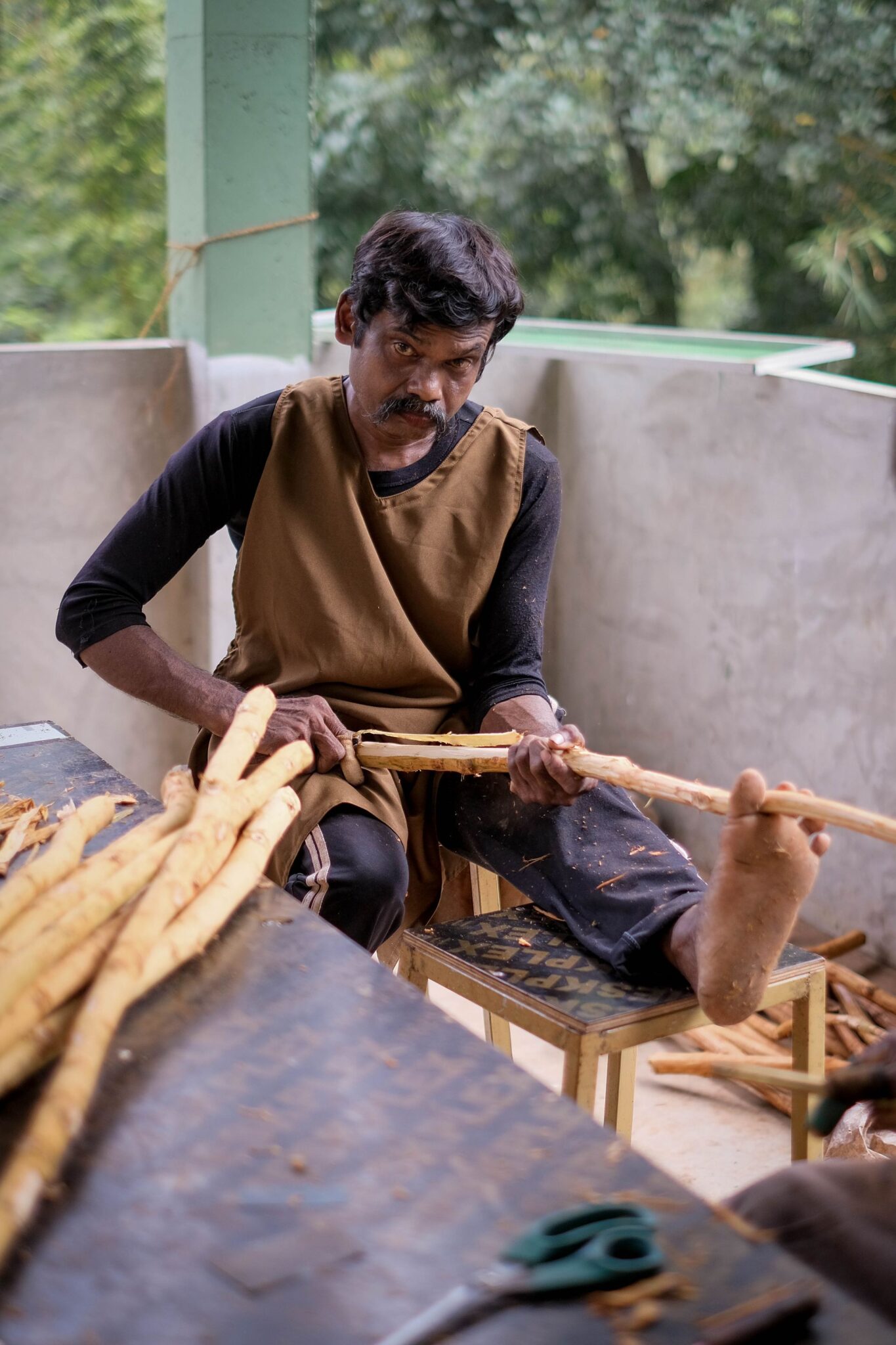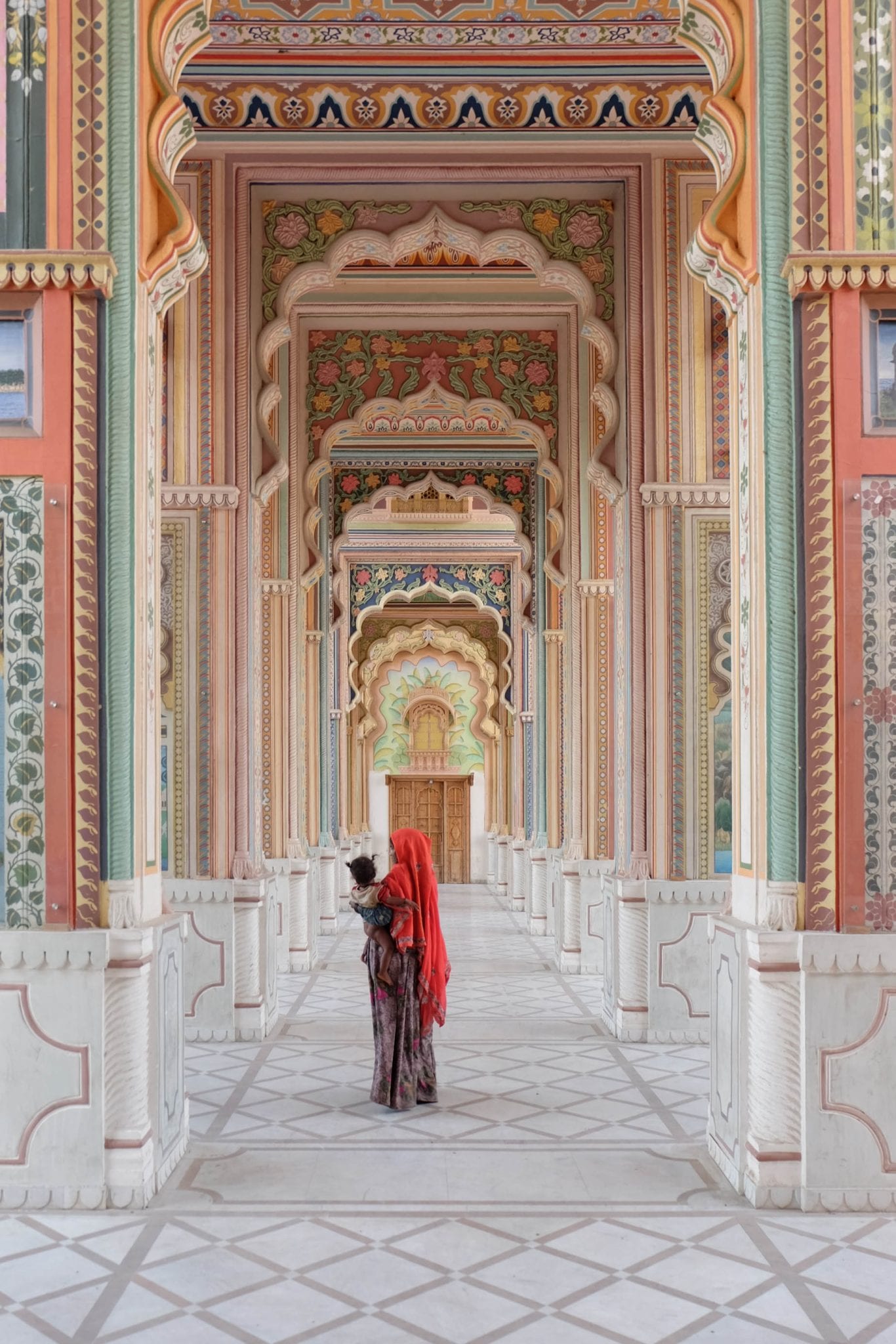Located in the waters of the Atlantic 360 miles from the Moroccan coast, the Portuguese autonomous region of Madeira can sometimes feel more like a verdant Central American paradise than a European enclave. Partly this is due to the island’s balmy subtropical climate and partly it is thanks to the island’s volcanic origins; its topography of high, jagged peaks and long, plunging valleys covered in banana plantations and mango groves invoke images of Jurassic Park’s Isla Nublar or – if you need a less fictional example – any of Hawaii’s rugged islands, minus the sandy beaches.




The island’s capital of Funchal, on the other hand, is the closest anywhere on the island comes to evoking mainland Portugal. Its wide boulevards are paved with traditional calçada Portuguesa and its narrow cobbled alleyways of whitewashed facades are packed with bakeries dishing out crispy and creamy pastéis de nata.
Nestled on the island’s sun-drenched south coast and ringed by a belt of precipitous peaks, Funchal is home to almost half of the Madeira’s population and as such, is the region’s cosmopolitan and cultural epicentere. Here elegant design hotels and Michelin star restaurants rub shoulders with centuries-old fortresses, cathedrals, and some of Europe’s finest botanical gardens.
This is a city that buzzes with activity from morning until sundown offering more than enough action for a day trip, if not a long weekend away.

Getting to Madeira
There are direct flights to Madeira from multiple UK airports. Jet2 offer flights to Madeira from Birmingham, Bristol, East Midlands, Edinburgh, Glasgow, Leeds Bradford, London Stansted, Manchester and Newcastle.
Jet2 also have a range of package holidays to Madeira.
Madeira’s airport is located 10 miles east of Funchal and connected by the Aerobus which runs once an hour from the airport to the Lido area (or Hotel Zone) on the west side of Funchal, via the city centre. A one-way ticket costs €5. A taxi to the city centre costs between €25 and €30.
Where to Stay in Funchal
One of Funchal’s newest openings, Hotel Next is the latest offering from the ever-popular Savoy Group’s six luxury hotels that they operate across Madeira. However, the Next offers a twist on stylish and contemporary accommodation, focusing on a younger clientele and taking lessons it learned while opening during the COVID-19 pandemic to implement state of the art, automated features; your entire experience can be operated from a phone app, whether that is setting your room to the ideal temperature before you head back to the hotel, ordering spa treatments and room service, or even activating the ‘do not disturb’ light on the exterior of your suite. Its high-tech credentials and focus on co-working spaces make the hotel ideal for digital nomads and millennials.
However, this doesn’t mean that Hotel next has forgotten the basics. The rooms themselves are stylish and sleek with an updated take on a mid-century modern aesthetic while the hotel is packed with excellent facilities. The poolside Recharge bar and restaurant serves up some of the best food you will find in Funchal – refreshing ceviche and colourful poke bowls of plump tuna steak – all with views out over the ocean, while the rooftop has its own pool and cocktail bar where you will find a DJ pumping out the tunes on a weekend evening.
I was proved with a complementary stay at the Next by Savoy Signature with Jet2Holidays
Getting around Funchal
Madeira’s Capital is anything but flat. With every few hundred metres that it extends beyond its pretty seafront promenade, the Avenida do Mar, it gains more altitude, sprawling outwards into the steep volcanic hillsides that encircle the city like towering amphitheatre terraces. Luckily, most of the main tourist sights are only a short walk from the harbour and the old town, Zona Velha, is easily walkable.
The much visited suburb of Monte, on the other hand, sits 550m above the city but can be reached without straining your legs thanks to the Monte cable car, which transports you there from Jardim do Almirante Reis and provides a panoramic view over the city (9.30am to 6pm, €10 one-way, or €15 return).

A One Day Funchal Itinerary
Morning
Funchal rises early, and one of the city’s highlights – the Art Deco and Art Neveau inspired market – springs into life before most tourists have even thought about heading to their daily breakfast buffet. Mercado dos Lavradores, designed by architect Edmundo Tavares and adorned with beautiful azulejos shipped from mainland Portugal, is at its best on Friday and Saturday mornings when the inner courtyard becomes jammed with stalls stacked high with local produce grown on the intriguing terraced fields that occupy Madeira’s steep-sided valleys.
The fruit and vegetables on display are like a living history of Madeira’s mercantile past; the abundant purple passionfruit and pitanga (a small, sweet and sour fruit that resembles a tiny red pumpkin) where both brought over from Brazil while the previously unknown to me custard apple originated in the Andes. Make sure to wander up to the upper section of the market to sample the fruits for yourself, ensuring that you pick up a surprisingly delicious Monstera fruit to sample

Beyond its enormous food harvest, Madeira’s position out in the Atlantic means that fresh fish is a staple come meal time and Mercado dos Lavradores is the place to go to seek out local specialities like tuna and the rather disturbing looking black scabbard fish that resembles a creature from one of Hans Ruedi Giger’s worst nightmares. Even if you don’t intend to buy any fish for yourself, the theatre of the market is worth watching as grizzled, chain-smoking fishmongers slice chunks of bright red tuna with long, intimidating machetes on metal tables.




From the Market, head along Rua Fernão Ornelas and cross Funchal’s central river to reach the city’s beautiful, pedestrianised Cathedral quarter where the purple blooms of jacaranda trees form a colourful canopy over the black and white checkerboard pavements. For those that are particularly taken with the city’s colourful foliage, Jardim de São Francisco, Santa Catarina Park & Jardim Municipal do Funchal offer wonderful displays of trees from Africa and South America and waterways that flow under flamboyant African tulip trees.
There’s plenty to occupy an entire day in downtown Funchal, where the wide, 20th century boulevards and narrow alleyways are jam-packed with picturesque praças – the municipal square with its 18th-century town hall and ornate fountain is particularly beautiful – crumbling forts and elegant old manor houses. Museums appear to be a dime a dozen. While some are best described as esoteric and niche, others are real cultural gems. The Museu de Arte Sacra, sitting beside Praça do Municipio, is the best of the bunch and here you will find priceless masterpieces that were originally acquired by 15th and 16th century merchants as payment from Flemish traders for Madeira’s bountiful sugar shipments.
Museums to Visit in Funchal
If you have longer than a single day to spend in Madeira’s capital and are tired of wandering its picturesque – but hilly – streets, you may want to step inside one of the city’s fantastic museums to gain a deeper insight into Madeira’s history.
Museu CR7
It’s hard to spend any amount of time in Madeira without realising that Portugal’s most famous export, the world’s greatest footballer, Cristiano Ronaldo grew up on the outskirts of Funchal. The Island’s airport is named after him, there are multiple bronze statues dotted around the place, and almost everyone you meet will utter his name and regale you with tales of their (often tenuous) connection to him.
Sitting on the Funchal waterfront beside one such statue of Cristiano is the CR7 Museum; a copper-coloured building filled with trinkets and trophies gathered throughout the Ronaldo’s distinguished career. This is a museum that’s strictly for fans as you won’t get a real insight into the man himself, rather it is a glorified trophy room packed with shirts, hat trick balls, and replicas of the dozens of trophies that he has earned through the years.
Where: Praça CR7, Av. Sá Carneiro Nº27
When: Monday to Friday 10am – 5pm
Quinta das Cruzes
Sitting on Funchal Bay and surrounded by an oasis of lush, tropical gardens, this beautiful Madeiran manor house was originally home to João Gonçalves Zarco, the Portuguese captain who discovered Madeira, and now contains an exquisite collection of furniture, sculpture, and decorative pieces gathered together by César Filipe Gomes.
Where: Calçada do Pico, nº1
When: Tuesday to Saturday 10am – 5.30pm
Madeira Story Centre
Situated in the heart of Funchal’s old town, the Madeira Story Centre is a modern, interactive museum that narrates the 14 million year-long tale of the island from its Volcanic beginnings to modern-day tourism via sections on Madeira’s discovery development and trading history.
Where: R. Dom Carlos I 27
When: Daily 9am – 7pm
Casa da Luz – Museu de Electricidade
One of the Island’s most niche attractions, the Museu de Electricidade is dedicated to the history of electricity generation on Madeira. Situated in a now-decommissioned power station that remains the headquarters of EEM (the Madeira Electric Company), the museum features interactive exhibits on Madeira’s use of renewable resources as well as a huge hall that is home to the Island’s impressive old diesel generators.
Where: R. Casa da Luz 2
When: Tuesday to Saturday 10am – 12.30pm & 2 – 6pm
Museu de Arte Sacra
Taking pride of place in Funchal’s beautiful Praça do Município, the former 16th-century bishop’s palace now hosts the fabulous Museu de Arte Sacra, home to an enormous collection of religious art, sculptures, and vestments that date from the end of the 15th century to the 19th century and once hung in the island’s once hung in the island’s manor houses and churches.
One of the highlights is the museum’s section of Flemish sculpture, sourced from Mechelen and Antwerp, while the collection of 15th and 16th-century Flemish paintings, aquired by merchant’s in Madeira during the height of the island’s sugar production days, is a must-see.
Where: R. do Bpo. 21
When: Tuesday to Saturday 10am – 12.30pm & 2.30pm – 6pm; Sunday 10am – 1pm
IBTAM Museum
If you spend any amount of time wandering the streets of Funchal, you are bound to witness women sat in doorways outside of their workshops, carefully embroidering fabric in elegant and intricate designs. Madeira’s hand embroidery is thought by many to be the finest of its kind in the world, passed from generation to generation for over 150 years. IBTAM is the organisation that oversees Madeiran embroidery and this charming museum at their headquarters gives visitors an insight into the island’s traditional textile industry.
Where: Rua Visconde de Anadia 44
When: Monday to Friday 9.30am – 12.30pm & 2pm – 5.30pm
Museu Photographia Vicentes
This well-preserved photographic studio, set up in 1865 by Vicente Gomes da Silva and in operation until 1982 is now home to a wonderful collection of over 800,000 historical images that depict Madeiran island life.
Where: Rua da Carreira 43
When: Tuesday to Saturday 10am – 5pm
While in the city centre, it would be remiss not to stop off at one of Funchal’s best architectural sights. The 16th-century Cathedral of Our Lady of the Assumption (or just plain old Sé Catedral to locals) is one of the few structures that has survived virtually intact since the early colonisation of Madeira and was declared a national monument in 1910. Mostly, the cathedral is famed for its ceiling, thought to be one of the most beautiful in all of Portugal.

Coffee culture is big in Funchal, and I am told by a local tour guide that coffee breaks for workers can often spiral into one or two hour affairs with packed tables spilling out onto every one of the city’s cobbled lanes any time of the day. Just be warned that ordering a coffee here isn’t like at home; asking for a cappuccino, latte, or flat white may get you a few funny looks. In Madeira, the locals order a bica (similar to an Italian espresso but milder), garoto (meaning ‘little boy’, this is a bica with milk), Chino (a slightly larger bica, similar to an americano), or a Chinesa (a larger garato).
If you need a caffeine fix, get it alongside a sweet treat at UauCacau, a chocolate shop founded by master chocolatier Tony Fernandes. They offer over 40 different flavours based on products of the island including banana, mango, passion fruit, pitanga, Poncha or Madeira wine. If that doesn’t satisfy your sweet tooth, then seek out Fabrica Santo Antonio. This quaint old shop and factory with its early 20th-century display cases, scales and counters was founded by Francisco Roque Gomes da Silva in 1893. He was inspired by the large English presence on Madeira and decided that he could make a successful business baking cookies for the Brits to eat with their afternoon tea. With that, Madeira’s first biscuit factory was born. Much of the original machinery (imported from England) is still used today, although the factory has since diversified to create jams, marmalades, sweets and traditional bolo de mel (molasses cake).



After getting your fill of gluttonous baked goods, make your way back towards Mercado dos Lavradores and wander west down Rua de Santa Maria into Funchal’s old town, the ‘Zona Velha’. This jumble of terracotta-roofed buildings sandwiched between the market and the impressive, canary-yellow Fortaleza de Santiago was, until fairly recently, a cluster of run-down fishermen’s cottages and merchant’s buildings but of late it transformed itself into a tourist-friendly dining and nightlife hub.

Part of the resurgence is thanks to the Painted Doors Project, a public art project intended to turn the old town into a significant cultural centre and a permanent art gallery, by commissioning local artists to decorate the doors of houses, shops and restaurants along Rua de Santa Maria.
Rua Santa Maria is awash with restaurants, most of them swelling beyond their premises onto the streets outside. While many are best described as mediocre and tourist traps at worst, there are some gems to be found. One such gem is Restaurant Santa Maria, set within a former primary school and dishing up delicious plates of Madeira’s abundant seafood. Although I may have previously described black scabbard fish as ugly, Santa Maria’s versions served with banana and passionfruit sauce or rolled with bacon and shrimp before being drizzled with mango chutney are both exquisite.

Afternoon
To reach the hillside suburb of Monte – a good 4km / 1.5-hour walk uphill from Funchal’s centre – you’re best catching the cable car (€12.50 one-way or €18 return) from its base station in the Almirante Reis Gardens, giving you a panoramic view over the city’s red rooftops as you make your way from the bustling city centre into the verdant slopes, hills and valleys of its outskirts, with the bright blue Atlantic Ocean providing a backdrop for the entire ride.
Monte, sitting 550m above Funchal and surrounded by lush wooded gardens, was once used as a health resort for Europe’s wealthy, who would come to stroll the tranquil streets and make the most of its favourable climate. You will find several “quintas” surrounded by tropical gardens, which formerly operated as luxurious hotels served by a train that navigated the slopes from Funchal to Monte between 1893 and 1930.


One such garden is the Monte Palace Tropical Gardens. Set in the grounds of a former hotel that was once the 18th-century private residence of the British Consul Charles Murray, this 70,000m ² houses an huge collection of exotic plants from all over the globe as well as a sprawling Japanese garden and picturesque lake. It was in the late 80s that the land was purchased in the late 1980s local entrepreneur José Berardo and transformed further, adding rockeries, fountains, sculptures and follies. As well as the gardens themselves, there are a few interesting exhibition spaces such as ‘African Passion’ which displays a collection of over 1000 contemporary Zimbabwean sculptures and ‘Mother Nature’s Secrets’, a jaw-dropping display of one of the finest private collections of minerals in the world.
The journey back to Funchal is even more thrilling than the cable car ride to Monte; a heart-stopping trip through the narrow, winding streets on a wicker toboggan. This is thought to be the oldest form of public transportation in the city, used by the wealthy owners of the neighbourhood’s quintas as a rapid way of transporting both goods and people down to Funchal.

The journey back to Funchal is even more thrilling than the cable car ride to Monte; a heart-stopping ride through the narrow, winding streets on a wicker toboggan. This is thought to be the oldest form of public transportation in the city, originating in the mid-19th century when the carts were used by the wealthy owners of the neighbourhood’s quintas as a rapid way of transporting both goods and people down to Funchal. The design of the carts hasn’t changed much over the last 100 years; they’re typically made of eucalyptus wood and wicker branches from the Curral das Freiras before being fitted with an upholstered seat and two wooden runners – malhares – that are greased with tallow to help them glide on the concrete. in perfect conditions, the speeds of the carts can reach up to 30 mph, guided by two drivers dressed in pristine white uniforms and their signature straw hats.
The carts depart from an area beside the Nossa Senhora do Monte Church and it takes around 10 minutes to ride the 2km route down to Livramento, a little below Monte. From there it is a further 15 to 20 minute walk downhill to Funchal or a short bus ride.
By this point in the day, you have probably earned a stiff drink and there is no better place to start than the island’s emblematic tipple; Madeira wine. Like Portugal’s other famous alcoholic export, Port, Madeira is a fortified wine, dating back centuries when wines were taken on board merchant vessels as victuals and brandy was added to each barrel to improve its keeping qualities during the long sea voyages. Surprisingly, it was found that the heat and humidity of the ship’s cabins dramatically enhanced the wines and it soon grew in popularity worldwide.


Occupying a former Franciscan monastery, Adegas de São Francisco, Blandy’s Wine Lodge is probably the best place in Funchal to learn all about Madeiran Wine. The Blandy family’s history of wine production dates back to 1811 when John Blandy, along with his brothers Thomas and George, founded his own business as a wine shipper and general trader. Eventually he purchased this property in Funchal due to it having the perfect layout, shape and structure to create a combination of unique temperature and humidity conditions for ageing Madeira wine.
The company is still run by the 6th and 7th generations of the Blandy family, Michael and Chris Blandy, and a fascinating tour of their wine lodge covers the making of barrels at the Cooperage, the transformation of grapes into Madeira wine, a look at their Brasilian satinwood storage vats and a look of the on-site museum. This is followed by the most important part of the tour; a Madeira wine tasting session. Tours last 45 minutes and cost €11.00 per person.
Evening
Come evening time, as cruise ship passengers return to their cosy cabins bound for new destinations, Funchal begins to both empty of crowds and come to life. This is the perfect time to wander the beautiful seafront and take in one of the islands famed sunsets as the mighty Atlantic rolls and swells beneath the orange skies. Make your way past the hulking ocean liners that roll and sway in the city’s harbour towards Forte Sao Jose, a former micronation that more recently became an informal cat sanctuary, and onwards to the Design Centre.
Part exhibition centre featuring work by designer Nini Andrade Silva and part fine dining restaurant, the elegant and fancy Design Centre sits high above the city on top of “Molhe” – the Fortaleza da Nossa Senhora da Conceição – which was once the home of Gonçalves Zarco, an old Portuguese sea navigator.

By the time the sun has set, the locals have come out to play and the historic old town takes on a livelier atmosphere, particularly along Rua Santa Maria, where tables spill out on to narrow cobbles and revelers gather to sup on beer and cocktails. While I mentioned earlier that Madeira wine is the emblematic drink of the island, the locals tend to favour poncha, a deceptively intoxicating mixture of sugar cane liqueur, honey, orange and lemon juice. This potent concoction can be found in most bars on the island, although the best small, traditional poncha bars can be a little harder to located due to the fact that many are nameless. Even asking for local recommendations can be a little confusing when it comes to this tipple, as everyone has their own favourite bar, but Venda Velha in the heart of old Funchal, comes highly recommended, as does the poncha at Pub Number 2 (suggested by our trusty coach driver) in the hotel zone. Just don’t get it confused with ‘The Pub’ across the street, as I did.
Where to Eat and Drink in Funchal
One thing is for certain, you won’t run out of great places to eat in Funchal. The Madeiran capital is packed with restaurants, ranging from Michelin-starred fine dining establishments to hole in the wall bakeries and small snack bars .
Armazém do Sal
Rustic with lots of character and charm, this old-style wood and stone restaurant is one of Funchal’s real gems. The compact a la carte menu is best described as refined and sophisticated.
Where: R. da Alfândega 135
When: Monday to Saturday 12pm – 3pm & 6.30pm – 11pm
Il Gallo d’Oro
Situated in Porto Bay’s five-star Cliff Bay Hotel, the two-Michelin star Il Gallo d’Oro is one of the island’s most prestigeous dining experiences. Chef Benoît Sinthon offers a 7 to 10-course tasting menu made with the best in local ingredients sourced from the island.
Where: Estrada Monumental 147
When: Tuesday to Saturday 7pm – 10pm
Santa Maria
Located on charismatic Santa Maria Street and set in a former elementary school, Santa Maria is a hostel and eatery offering a modern take on traditional Portuguese gastronomy. A Hostel may not scream great food to most people but Santa Maria’s menu is far from the basic sustenance you will find in most European backpacker boltholes; think freshly made sushi, lagareiro style octopus, and black scabbard with banana and passion fruit sauce.
Where: Rua de Santa Maria 145
When: Daily 12pm – 11pm
Belmond Reid’s Palace
Surrounded by lush subtropical gardens and perched above Funchal Harbour, the luxurious Belmond Reid Hotel has been welcomed guests for 130 years. Its elegant afternoon tea of delicate finger sandwiches, freshly baked scones and homemade pastries is served by waiters in white suit jackets on the pastel pink, checkerboard floored terrace three times a week and is the ultimate indulgance.
If you want to splash out further, the hotel’s Michelin-starred William Restaurant is open on Wednesdays and Thursdays between 7.30pm and 11pm, although it is recommended that you book in advance.
Where: Estrada Monumental 139
When: Afternoon tea is available Available Wednesday, Thursday and Sunday, at 3pm and 4.30pm.
Design Centre
The Design Centre Nini Andrade Silva is situated high above Funchal marina in a building building known locally as “Molhe” – the Fortaleza da Nossa Senhora da Conceição, which was once the home of Gonçalves Zarco, an old Portuguese sea navigator.
Nowadays the old fort is home to a store, cafeteria-lounge and permanent exhibition/museum featuring work by Madeiran designer Nini Andrade Silva. The top floor restauraunt is strictly fine dining, with an a la carte menu recreating Madeiran regional cuisine with additional style and flair.
Where: Estrada da Pontinha
When: Tuesday to Sunday 11am – 11pm
PrimaCaju
Lorem ipsum dolor sit amet, consectetur adipiscing elit. Ut elit tellus, luctus nec ullamcorper mattis, pulvinar dapibus leo.
Where: Rua da Carreira 108
When: Monday to Friday 9.30am – 6pm; Saturday & Sunday 11am – 4pm
Restaurante dos Combatentes
A simple and unpretentious family-run eatery serving traditional Madeiran favourites such as scabbardfish and espetada in a quaint, antique filled dining room.
Where: R. de São Francisco
When: Monday to Saturday 11.45am – 3.30pm & 6pm – 10.30pm
Three House
Where: Rua Brigadeiro Oudinot 2
When: Daily 5pm – 10pm
FugaCidade
Good beer can be hard to come by in Madeira, mainly due to the fact that Coral appear to dominate the taps of most pubs with their mass-produced lager and stout. Luckily, Fugacidade is one of the few bars on the island catering to craft beer lovers, offering a wide range of styles both on keg and in can, albeit limited to breweries based on mainland Portugal.
Where: R. do Conde de Canavial 22
When: Monday to Friday 8am – 12am; Saturday 6pm – 12am
When is the Best time to Visit Funchal?
Madeira is truly a year-round destination where any month of the year is ideal for visiting. You will find that the island is at its busiest in summer when temperatures often sit in the 24-25 ºC region and rarely drop below the mid-teens. Even in winter, you will find the climate is a rather agreeable 18-20 ºC, however, expect rain, showers and storms until mid-February when clear skies become the norm again.
In my opinion, spring is the perfect time to visit Madeira; This is a time of year when much of the island’s diverse flora is in bloom and April & May both bring long, dry days with plenty of sunshine. This is also a time when the annual Festa da Flor (flower festival) takes place, bringing an explosion of colour to Funchal.
It’s worth noting that both flights and accommodation become more expensive towards the end of December due to New Year’s Eve when people flock here to experience Madeira’s extravagant firework display.

















